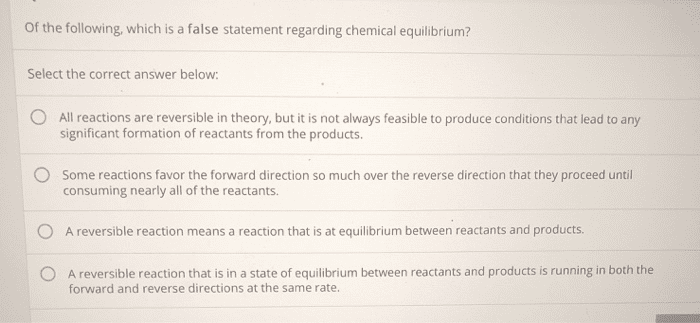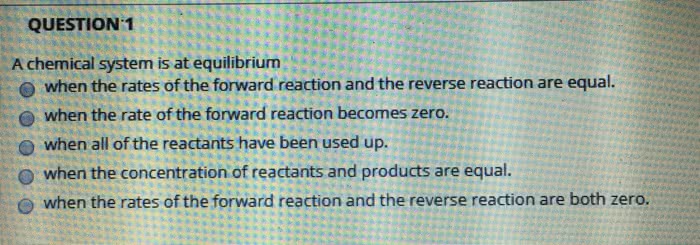CHEM 1128Q Chapter Notes - Chapter 13: Inert Gas, Partial Pressure, Reaction Quotient

19
CHEM 1128Q Full Course Notes
Verified Note
19 documents
Document Summary
Chemical reactions can occur in both directions simultaneously to eventually reach a state of balance: reactants products or products reactants, balanced two-way reactions like this happen all the time. All reactions are reversible, but many reactions proceed in the forward direction until all reactants are exhausted, and are only reversible under certain conditions. A state of equilibrium can be determined because the concentrations of reactants and products do not appear to change. When referring to a specific component of a reversible reaction a single arrow is used. A way to mathematically represent the how the amounts of reactants and products affect the equilibrium is through the reaction quotient (q) A general reaction can be written as: ma + nb xc + yd. The reaction quotient (q) for this reaction can be written as: qc = [(cid:3004)](cid:3299)[(cid:3005)](cid:3300) 2no2(g) n2o4 (g: the reaction quotient for this reaction can be written as, qc = [(cid:3015)2(cid:3016)4]



